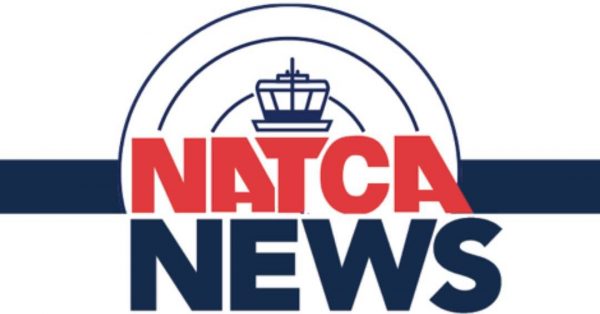
NATCA SUPPORTS FY24 APPROPRIATIONS PACKAGE WITH FUNDING FOR FAA, URGES PASSAGE
(WASHINGTON) – The National Air Traffic Controllers Association (NATCA) applauds House and Senate leadership, as well as members of the House and Senate Appropriations Committees, for reaching a bipartisan agreement on Fiscal Year (FY) 2024 appropriations that includes additional funding for the Federal Aviation Administration (FAA). NATCA urges all members of the House and Senate to support the six-bill appropriations package scheduled for floor votes this week.
“NATCA thanks Congressional leadership and the Appropriations Committees for reaching this bipartisan agreement, avoiding a costly and damaging shutdown, and providing necessary investment in our aviation system that millions of Americans rely upon,” said NATCA President Rich Santa. “NATCA hopes this bipartisan collaboration will jumpstart next year’s appropriations process and avoid future budgetary brinksmanship. We urge Congress to pass this appropriations package without delay.”
NATCA also would like to thank the members and staff of the Transportation, Housing and Urban Development, and Related Agencies (THUD) subcommittees: Chairman Brian Schatz of Hawaii, Chairman Tom Cole of Oklahoma, Ranking Member Cindy Hyde-Smith of Mississippi, and Ranking Member Mike Quigley of Illinois, as well as the leadership of the full Appropriations Committees: Chairwoman Patty Murray of Washington, Chairwoman Kay Granger of Texas, Ranking Member Susan Collins of Maine, and Ranking Member Rosa DeLauro of Connecticut.
“NATCA supports the FY24 appropriations package, which provides critical funding to maintain the safety and efficiency of the National Airspace System,” Santa said. “These resources will allow FAA to hire at least an additional 1,800 new controller trainees this year to begin to address the ongoing staffing shortage. This legislation also provides increased funding to maintain and improve air traffic control infrastructure and deploy additional technology to help controllers keep aircraft safe on the ground and in the air. We look forward to working with Congress and the administration to ensure FY25 funding builds on these important investments so that the United States continues to have the safest and most efficient aviation system in the world for years to come.”
The FY24 THUD bill includes top NATCA funding priorities, including:
- $12.7 billion for FAA Operations, an increase of approximately $820 million compared to the current funding level, to ensure FAA can hire an additional 1,800 controller trainees in the coming year, as well as to accommodate increased personnel and other fixed costs that are integral to the successful operation of the National Airspace System.
- $3.2 billion for FAA Facilities & Equipment, an increase of almost $250 million compared to the current funding level, will help maintain and upgrade critical aviation technology and infrastructure throughout the country. Although this funding level falls short of the FAA’s budget request, and NATCA believes additional funding is needed, this is an essential down-payment on future investment for FY25 and future years.
The THUD provisions in this bill also include targeted investments that will help address the controller staffing shortage, accelerate training, and improve safety:
- $19 million above FAA’s budget request for air traffic and technical operations training laboratory enhancements, including an additional en route automation modernization lab and a complementary technical operations laboratory, at the Mike Monroney Aeronautical Center to increase throughput for air traffic controller trainees at the FAA Academy.
- $15 million above FAA’s budget request to deploy technology for the Surface Awareness Initiative, and accelerate deployment of runway incursion prevention tools that will alert controllers to potential safety issues.
In the last decade, the number of certified professional controllers has decreased by an alarming 10%, leading to the routine use of mandatory overtime, including six-day work weeks and 10-hour workdays in many facilities. This has increased stress and fatigue for our members and their families. Aging infrastructure also poses a challenge, as many air traffic control facilities—and the technology that supports their operation—are well beyond their intended lifespan. The FAA will require significant additional resources to address these challenges in FY25 and beyond.
FOR MORE INFORMATION:
Galen Munroe, Deputy Director of Public Affairs; 202-220-9802, [email protected].
The National Air Traffic Controllers Association (NATCA) is a labor union and aviation safety organization in the United States that represents nearly 20,000 highly skilled air traffic controllers, engineers, and other aviation safety-related professionals. NATCA was certified in 1987 by the Federal Labor Relations Authority to be the exclusive bargaining representative for air traffic controllers employed by the Federal Aviation Administration. Today, NATCA is one of the strongest labor unions in the federal sector and represents a range of aviation safety professionals in 15 FAA bargaining units, five Department of Defense air traffic facilities, and 123 federal contract towers. These air traffic controllers and other aviation safety professionals make vital contributions to the U.S. economy and make modern life possible by coordinating the safe, orderly, and expeditious movement of one billion aviation passengers and millions of tons of freight within the National Airspace System each year. NATCA is headquartered in Washington, D.C., and is affiliated with the AFL-CIO.

